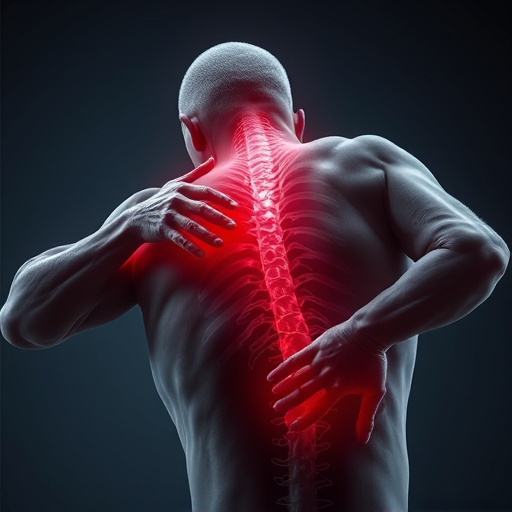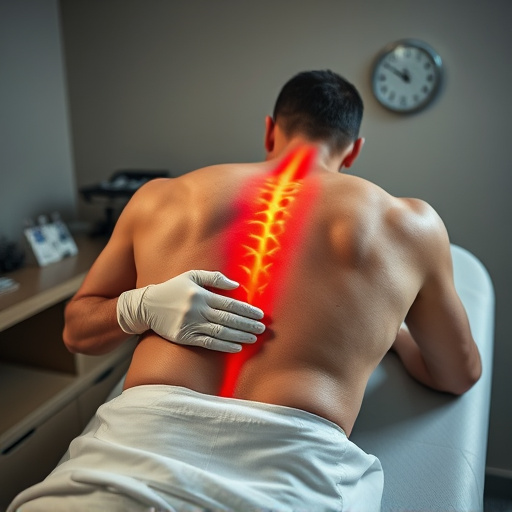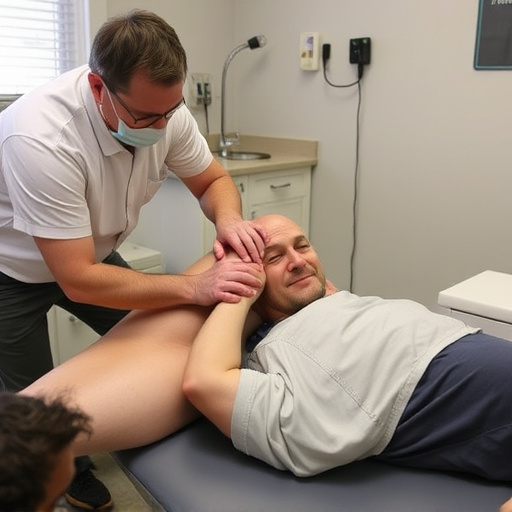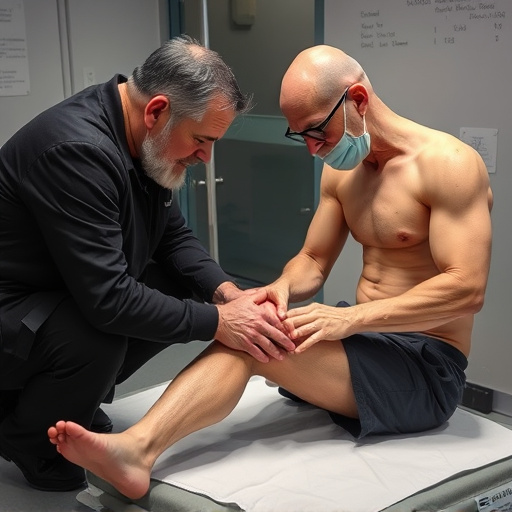Low-energy acoustic waves, known as shockwaves, offer a non-invasive solution for shockwave tendonitis relief. By stimulating healing at a cellular level, enhancing blood flow and promoting new tissue growth, this method accelerates recovery times and improves mobility compared to invasive procedures or medication. Ideal for post-accident rehabilitation or avoiding surgery, it facilitates functional restoration for those suffering from tendonitis-related back pain.
“Uncover the science behind shockwave therapy and its remarkable ability to provide shockwave tendonitis relief. This innovative treatment has revolutionized sports medicine, offering a non-invasive approach to managing painful tendon conditions. Our article delves into the mechanism of action, exploring how low-energy shockwaves stimulate healing processes at the cellular level. By understanding the science, we can appreciate the effectiveness of this therapy in alleviating symptoms and accelerating recovery.”
- Unraveling the Science Behind Shockwave Therapy
- How Shockwaves Alleviate Tendonitis Symptoms
- The Mechanism: From Injury to Healing
Unraveling the Science Behind Shockwave Therapy

Shockwave therapy has emerged as a groundbreaking treatment for shockwave tendonitis relief, offering a non-invasive approach to managing this painful condition. The science behind it lies in using low-energy acoustic waves, known as shockwaves, to stimulate healing within the body. These shockwaves penetrate deep into tissues, including tendons and muscles, where they create tiny micro-fractures. This process prompts the body’s natural repair mechanisms to kick in, enhancing blood flow and stimulating the growth of new, healthy tissue.
Unlike traditional methods that often rely on medication or surgery, shockwave therapy avoids side effects and promotes faster recovery times. It’s especially beneficial for those seeking an alternative to post accident rehabilitation or spinal adjustment methods. By targeting specific areas of pain and inflammation, this innovative treatment can significantly improve mobility and alleviate symptoms associated with tendonitis, providing patients with lasting relief.
How Shockwaves Alleviate Tendonitis Symptoms

Shockwaves, or low-energy sound waves, have gained recognition as an effective non-invasive treatment for shockwave tendonitis relief. This innovative approach works by stimulating the healing process at a cellular level. When applied to the affected area, these acoustic waves penetrate deep into tissues, reaching the tendons and surrounding structures. The energy from the shockwaves promotes angiogenesis, encouraging the growth of new blood vessels that enhance nutrient delivery to the injured tendon.
Additionally, shockwaves can reduce inflammation and pain associated with tendonitis. They do this by inhibiting pro-inflammatory mediators and triggering a natural anti-inflammatory response in the body. This dual action not only alleviates symptoms but also facilitates functional rehabilitation, making it a promising treatment option for individuals suffering from back pain relief due to tendonitis or seeking personal injury chiropractic care.
The Mechanism: From Injury to Healing

The journey from injury to healing is where shockwave tendonitis relief begins. When a tendon becomes inflamed due to overuse or sudden stress, it’s crucial to understand that this inflammation is the body’s initial response to damage. The body then initiates a complex process involving various cells and factors to repair and rebuild the affected area. This intricate mechanism involves the activation of stem cells, which have the potential to differentiate into different types of tissue, including tendon.
Chiropractic care plays a significant role in facilitating this healing process. By adjusting the joints and soft tissues, chiropractors can reduce pressure on the tendons, improve blood flow, and promote optimal nervous system function. This personalized injury chiropractic approach not only alleviates pain but also ensures that the body has the best chance to regenerate healthy tendon tissue, ultimately contributing to shockwave tendonitis relief. Additionally, for conditions like whiplash treatment, where soft tissue damage is common, these techniques can be particularly beneficial in managing and preventing further complications.
Shockwave tendonitis relief has been revolutionized through understanding the mechanism behind its effectiveness. By leveraging the power of shockwaves, this non-invasive therapy disrupts chronic inflammation and accelerates tissue regeneration. The science behind it is a fascinating journey from injury to healing, where targeted energy waves stimulate fibroblasts and promote the growth of new, healthy tendon tissue. As research continues, shockwave therapy emerges as a game-changer in managing and alleviating shockwave tendonitis symptoms, offering hope for those seeking long-lasting relief.














